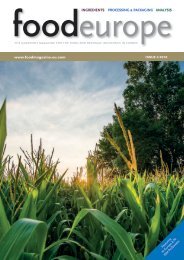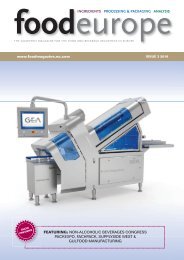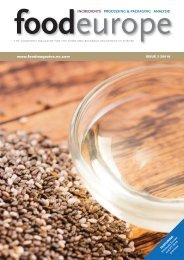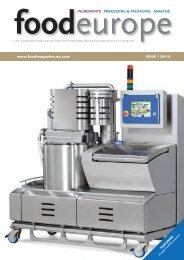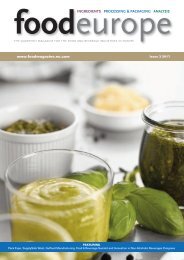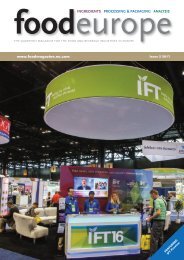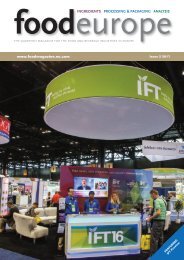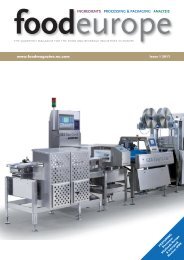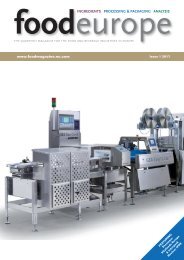food
You also want an ePaper? Increase the reach of your titles
YUMPU automatically turns print PDFs into web optimized ePapers that Google loves.
10<br />
analysis and control<br />
Microarrays and genomics bring new<br />
insights to the <strong>food</strong> industry<br />
IFR (the Institute of Food Research) is the leading centre in Europe for its work with Salmonella<br />
microarrays, and in this article Dr Jay Hinton will use the Institute’s experiences with Salmonella to<br />
explain how microarray technology works, and what it can be used for.<br />
The first genome sequence for<br />
Salmonella was completed in<br />
2001, and gives a complete<br />
readout for every gene in the<br />
organism. It described the 5000<br />
separate genes of Salmonella<br />
typhimurium, one of the major<br />
causes of <strong>food</strong>-poisoning in<br />
humans in Europe. Since 2001 five<br />
new genome sequences have been<br />
completed for Salmonella,<br />
including Salmonella enteritidis,<br />
another major cause of <strong>food</strong><br />
poisoning associated with chicken<br />
eggs. The scope of the problem is<br />
significant: in the UK alone there<br />
are at least 50,000 cases of <strong>food</strong>borne<br />
Salmonella infection every<br />
year and 100 deaths. It kills more<br />
people than any other bacterium<br />
that is transmitted by <strong>food</strong>. The<br />
major culprits are poultry, pork<br />
and eggs, but it can also be<br />
transmitted on vegetables such as<br />
salads. Those most at risk will be<br />
people who are immunocompromised,<br />
particularly the very<br />
young or the very old, which is<br />
why eggs used in residential<br />
homes for the elderly are<br />
pasteurised.<br />
Developing the microarray<br />
DNA Microarrays are new tools<br />
that allow researchers to learn the<br />
function of newly-identified genes<br />
from bacterial genomes. The<br />
concept of microarray technology<br />
was first developed in 1995 in<br />
Stanford, California, by two<br />
scientists called Pat Brown and<br />
Joe DeRisi. It was a completely<br />
original idea, made possible by<br />
various different technical<br />
developments, particularly the<br />
development of accurate robots to<br />
make silicon chips. In simple<br />
terms, a microarray is a small,<br />
glass microscope slide, and the<br />
surface is covered with thousands<br />
of DNA spots representing<br />
different genes. Once the genome<br />
sequence for Salmonella<br />
typhimurium had been completed,<br />
the team at IFR started to develop<br />
a microarray. They used a process<br />
known as PCR (Polymerase Chain<br />
Reaction) to amplify the DNA,<br />
make copies of every Salmonella<br />
gene and put a copy of each gene<br />
as a spot onto glass slides.<br />
Main challenges in the<br />
development phase<br />
However, the development of the<br />
microarray was not completely<br />
straightforward. The first task was<br />
to get the robotics side of things<br />
working. Because there were<br />
problems with many of the<br />
commercial offerings, the team at<br />
IFR ended up building their own<br />
robotic printer to make the<br />
microarrays. That required some<br />
technical know-how, but<br />
fortunately the group in Stanford<br />
had made the plans for their robot<br />
available on the Internet, enabling<br />
<strong>food</strong> spring 2005







